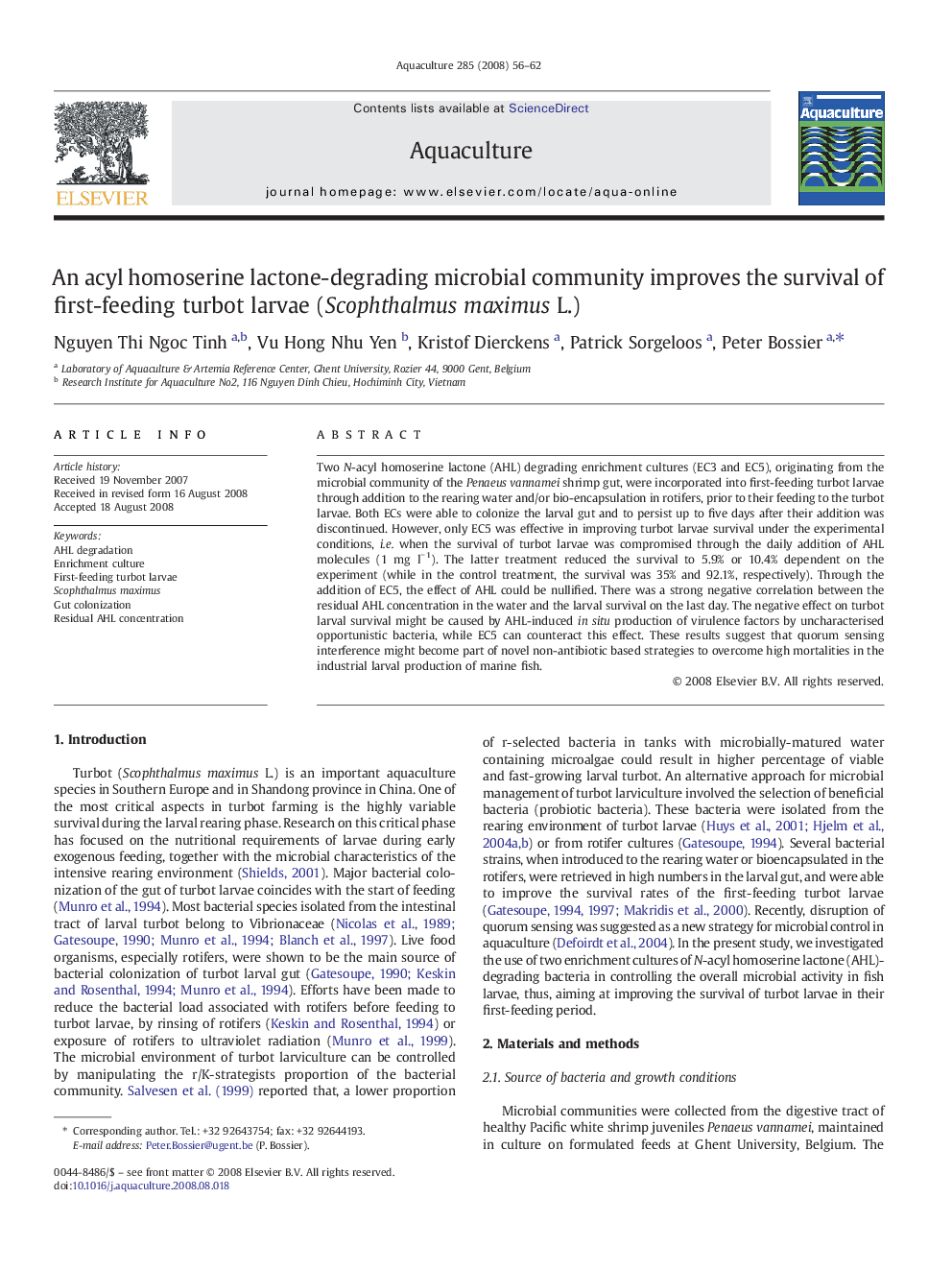| Article ID | Journal | Published Year | Pages | File Type |
|---|---|---|---|---|
| 2424351 | Aquaculture | 2008 | 7 Pages |
Two N-acyl homoserine lactone (AHL) degrading enrichment cultures (EC3 and EC5), originating from the microbial community of the Penaeus vannamei shrimp gut, were incorporated into first-feeding turbot larvae through addition to the rearing water and/or bio-encapsulation in rotifers, prior to their feeding to the turbot larvae. Both ECs were able to colonize the larval gut and to persist up to five days after their addition was discontinued. However, only EC5 was effective in improving turbot larvae survival under the experimental conditions, i.e. when the survival of turbot larvae was compromised through the daily addition of AHL molecules (1 mg l− 1). The latter treatment reduced the survival to 5.9% or 10.4% dependent on the experiment (while in the control treatment, the survival was 35% and 92.1%, respectively). Through the addition of EC5, the effect of AHL could be nullified. There was a strong negative correlation between the residual AHL concentration in the water and the larval survival on the last day. The negative effect on turbot larval survival might be caused by AHL-induced in situ production of virulence factors by uncharacterised opportunistic bacteria, while EC5 can counteract this effect. These results suggest that quorum sensing interference might become part of novel non-antibiotic based strategies to overcome high mortalities in the industrial larval production of marine fish.
